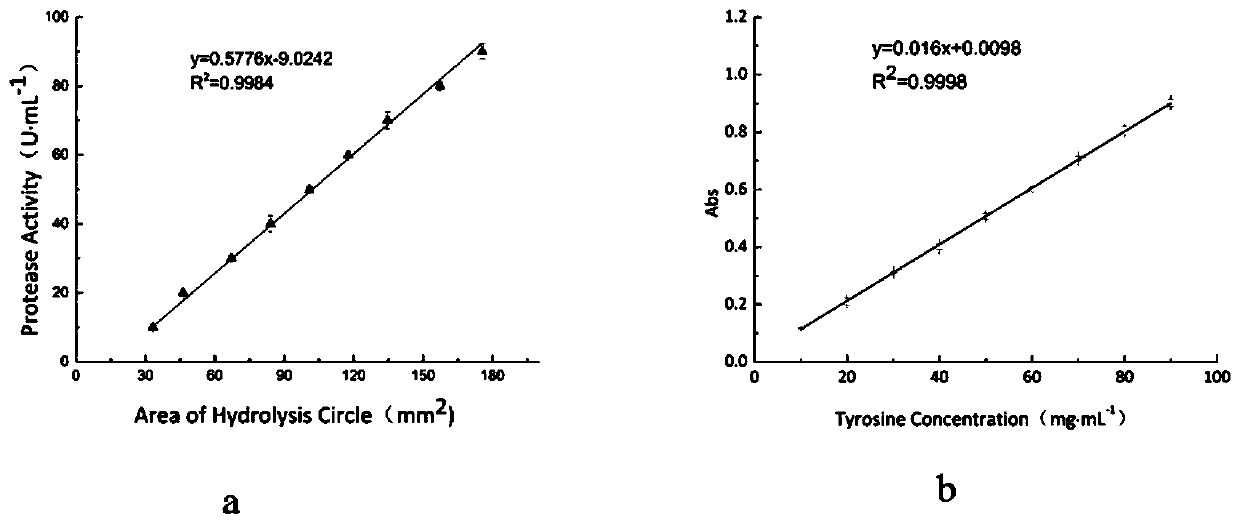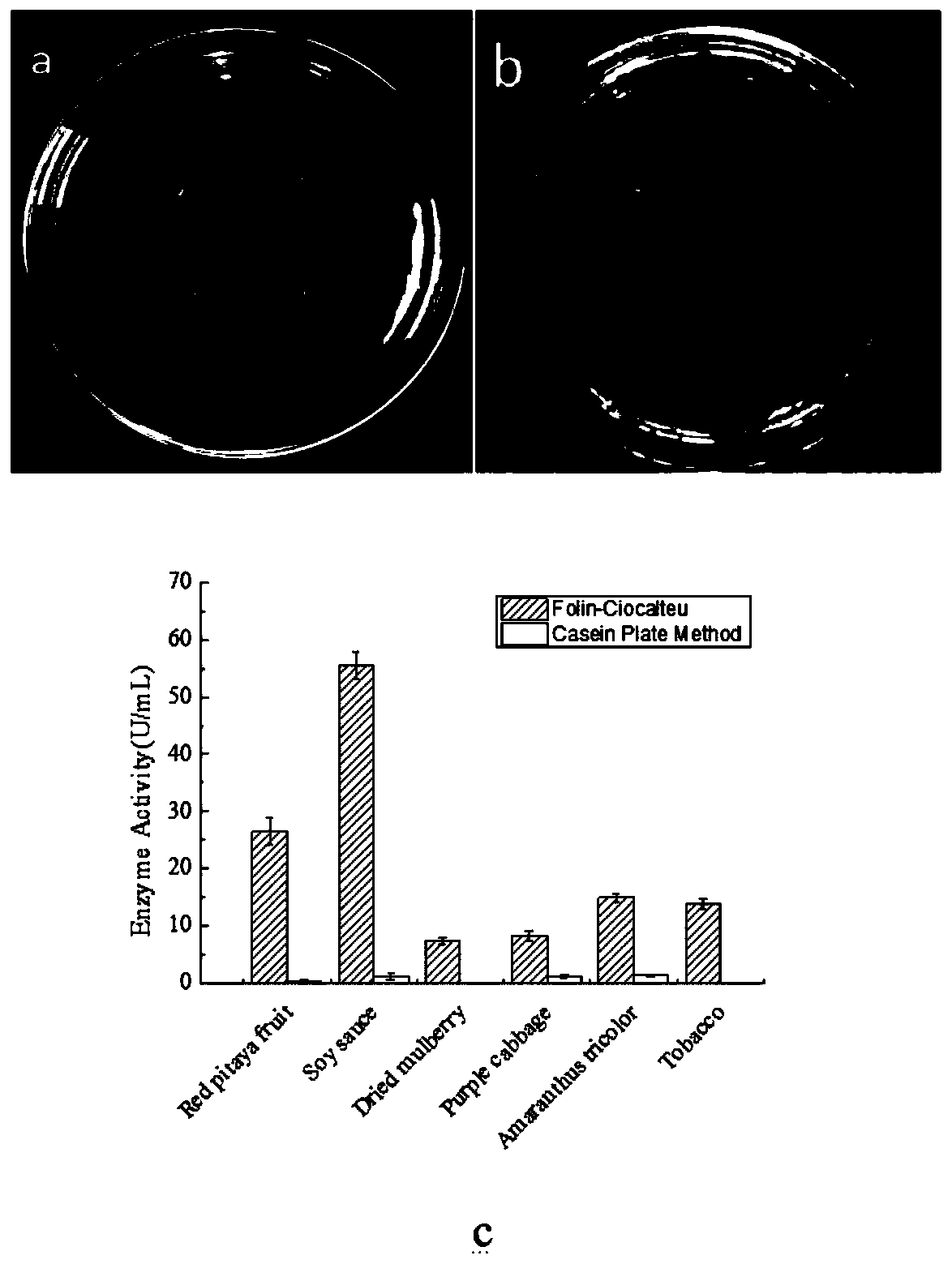Application of casein plate method in quantitative analysis of protease activity
A quantitative analysis and casein technology, which is applied in the field of protease activity detection, can solve the problems such as error-prone detection results, error-prone measurement results, large absorbance value, etc., to avoid errors and inaccurate measurement results, low detection limit, Simple operation effect
- Summary
- Abstract
- Description
- Claims
- Application Information
AI Technical Summary
Problems solved by technology
Method used
Image
Examples
Embodiment 1
[0017] Embodiment 1 Folin phenol method and casein plate method contrast
[0018] (1) Casein plate method: use a 10mL pipette tip to punch the prepared casein plate (three holes on one plate, as parallel), draw 10 μL of enzyme solution into the hole, let it stand for 10 minutes, and then put it into a 37°C incubator Inverted culture for 18 hours, take out to measure the diameter of the hydrolysis circle and calculate the area of the dissolution circle. Properly dilute the commercial trypsin to prepare the solution with the required enzyme activity, respectively punch and culture on the casein plate, take the area of the dissolution circle as the abscissa (x, mm2), and the commercial trypsin activity as the ordinate (y, U · mL-1) Make a commercial trypsin standard curve. The enzyme activity of the sample was measured according to the steps of the standard curve, and the area of the hydrolysis circle of the sample was calculated with the commercial trypsin standard curve ...
Embodiment 2
[0024] Embodiment 2 casein plate method precision
[0025] Accurately weigh 18 parts of 0.100g commercial trypsin, add sterile water to dissolve to 10mL, prepare a 250U / mL trypsin solution, and dilute it into 6 parts of 10U·mL-1, 25U·mL-1, 50U·mL -1 solution. Pipette 10 μL into the casein plate, let it stand for 10 minutes, and incubate it upside down in a 37°C incubator for 18 hours, measure the diameter of the hydrolysis circle, and calculate the enzyme activity and RSD value.
[0026] Table 1 Low concentration, medium concentration and high concentration measurement results and RSD values
[0027]
[0028] The precision results of this method are shown in Table 1. The precision is 1.22%-8.07%, all less than 10%, and the RSD range is 2.92%-8.07% at low concentration, less than 10%; the RSD range is 0.45%-4.86% at medium concentration, less than 10%; high concentration Its RSD range is 1.22%-2.85%, which is less than 10%. Hao Wu used HPLC-UV to determine the content of...
Embodiment 3
[0029] Embodiment 3 casein plate method detection limit
[0030] Accurately weigh 0.1 g of commercial trypsin, dissolve it in 10 mL of water, and prepare a 250 U / mL solution. Then draw 1mL of the above-concentrated solution, dilute it 25 times, and prepare a 10U / mL solution. Then prepare 1U / mL, 2U / mL, 3U / mL, 4U / mL, 5U / mL, 6U / mL, 7U / mL, 8U / mL, 9U / mL, 10U / mL, draw 10μL of casein respectively The plates were left to stand for 10 minutes and then incubated upside down in a 37°C incubator for 18 hours, the diameter of the hydrolysis circle was measured, and the enzyme activity and RSD value were calculated, and parallel triplicate. The results are shown in Table 2.
[0031]Table 2 Detection limit experimental results
[0032]
[0033] According to the experimental results, more accurate results can be detected when the protease activity is 7U / mL, the detection values are 7.115, 7.115, 6.604U / mL, the average value is 6.945U / mL, the standard deviation is 0.295, and the relati...
PUM
 Login to View More
Login to View More Abstract
Description
Claims
Application Information
 Login to View More
Login to View More - R&D
- Intellectual Property
- Life Sciences
- Materials
- Tech Scout
- Unparalleled Data Quality
- Higher Quality Content
- 60% Fewer Hallucinations
Browse by: Latest US Patents, China's latest patents, Technical Efficacy Thesaurus, Application Domain, Technology Topic, Popular Technical Reports.
© 2025 PatSnap. All rights reserved.Legal|Privacy policy|Modern Slavery Act Transparency Statement|Sitemap|About US| Contact US: help@patsnap.com



